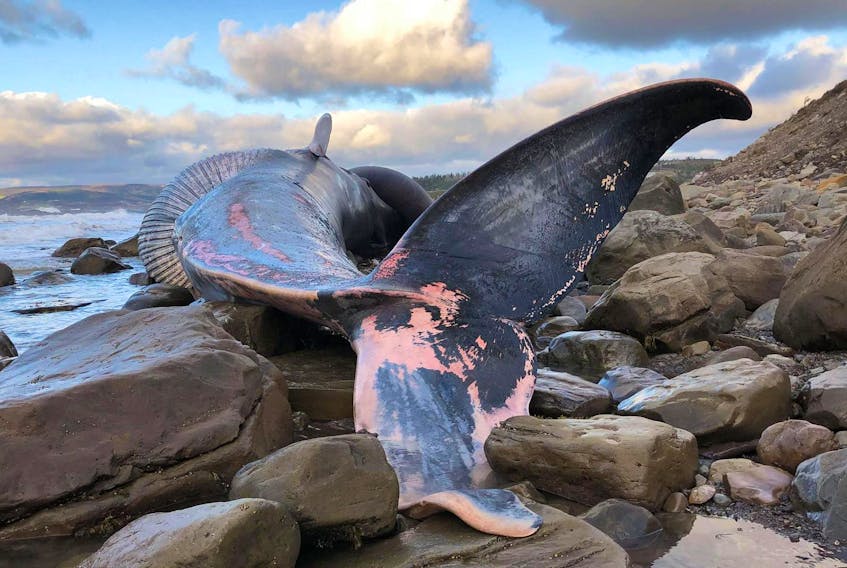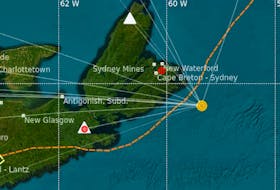On Monday, Christian Ramp was looking at pictures of a dead blue whale found near Colindale Beach, outside Port Hood, last week.
The research co-ordinator for the Mingan Island Cetacean Study had hoped to identify which individual of the enigmatic species had washed ashore by the mottled colouring on the animal’s back.
But the photo was taken from a poor angle so he will have to wait for tissue samples to see if he can get a genetic match to any of the 515 northwestern Atlantic blue whales in their catalogue.
It was the second blue whale found dead in the Gulf of St. Lawrence last week.
The whale found off Anticosti Island was too far from shore to make a necropsy practical, but plans are being made to bring in veterinarians from Prince Edward Island in an attempt to figure out what killed the young male that washed ashore near Port Hood on Sept. 18.
“We don’t know,” said Ramp when asked what losing two individuals means for the species.
That’s because no one knows how many blue whales there are in the northwestern Atlantic.
We also don’t know if they go somewhere special to find mates or to calve.
Despite being the largest species known to have ever existed (dinosaurs included) on this little rock spinning around the sun, we know barely anything about them.
Ramp gets the irony.
“When I started studying these whales I knew people who had been doing it for 30 years and there was little known then,” said Ramp.
“Now I’ve been studying them for another 20 years and there’s still many big questions.”
They are fast, don’t tend to congregate in big groups and prefer deep open water.
The Gulf of St. Lawrence is actually one of the very few places where they can sometimes be seen near shore.
They also don’t migrate in a predictable fashion.
“They are always searching for food,” said Ramp.
So while right whales spend winters in the shallow waters off the southeastern United States and the spring and summer eating copepods in the Bay of Fundy or Gulf of St. Lawrence, blue whales can show up pretty well anywhere at any time the ocean isn’t ice covered.

BLUE WHALE (Atlantic Population)
HABITAT: Found in waters off Eastern Canada. They usually migrate south for the winter, but some whales may remain in the region all year long.
LIFESPAN: Between 70 and 80 years. Blue whales reproduce every two or three years. Calves can weigh up to two tonnes at birth.
DIET: Blue whales primarily eat krill, a small shrimp-like crustacean.
SIZE: Blue whales can grow up to 29.9 metres (98ft) in length, and a maximum recorded weight of 173 tonnes, making it the largest animal known to have ever lived.
Source: Department of Fisheries and Oceans.
One whale from which a genetic sample had been taken off Quebec’s North Shore in 1984 wasn’t seen again until 2015 when it was identified off the Azores archipelago on the other side of the Atlantic.
If you were looking to eat up to a tonne of krill (like a small shrimp) each day, you might travel too.
But generally the Atlantic’s blue whales are thought to rarely cross from east to west and so exist as two separate populations.
The largest measured blue whale was 29.5 metres long and weighed over 200 tonnes.
Attempts to tag them have been largely unsuccessful because the tags keep popping off.
Nine calves were spotted last year – the best year on record.
But mortality remains a big question.
“We think mortality is underestimated,” said Ramp.
“Fishing gear entanglements, ship strikes, the same things that affect right whales and fin whales affect blue whales.”
It’s just that usually they die far out to sea.
RELATED:









